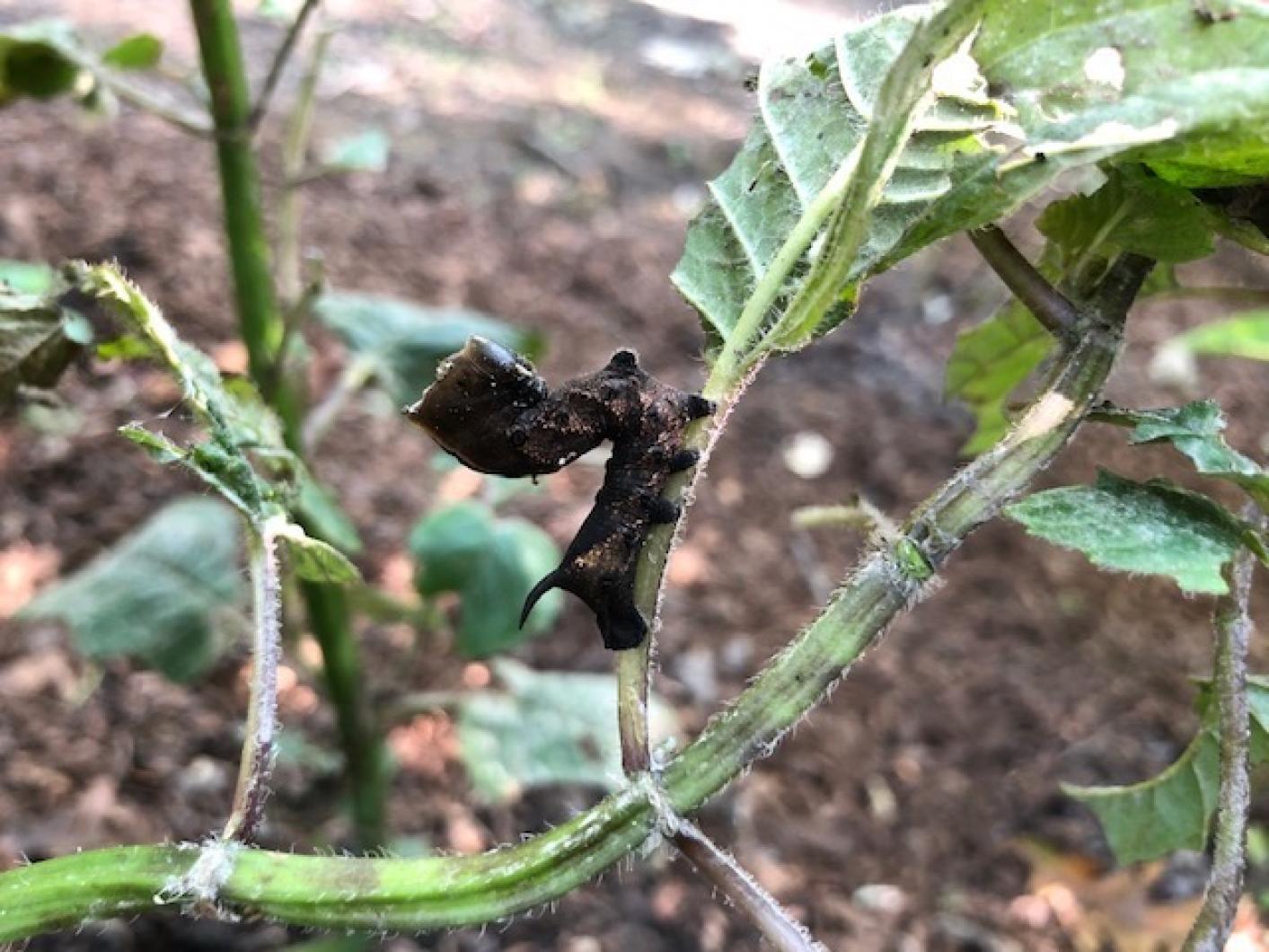The Sphinx of Ancient Greece drove a hard bargain.
In order to gain passage to the Greek city of Thebes, travelers were asked to solve a riddle. Failure to solve the puzzle meant death, as the Sphinx, which was a creature with a human head, body of a lion, wings of a bird, and the tail of a snake, would strangle and devour those that gave the wrong answer.
The stakes were not so high when I came head to head with another sphinx. In this case, as author George R.R. Martin explained in his book A Feast For Crows, “The Sphinx is the riddle, not the riddler.”
The riddle of identification was posed by Susan Straight of Chilmark, who found a large brown caterpillar with a sharp-looking spine or horn on its posterior section, rearing its head on her monarda. A large black and white eye was also present on the top of caterpillar’s first few segments.
Its praying position, resembling the posture of a Sphinx, made its naming as a sphinx moth caterpillar an apt choice. Susan suspected that it was likely the hermit sphinx, Lintneria eremitus, but sought confirmation since that species was designated as a non-resident stray by Allan Keith in his book, Island Life: A Catalogue of the Biodiversity On and Around Martha’s Vineyard.
Sphinx moths are members of the Family Sphingidae, also called hawk moths and hornworms. They are known for their large size, terrific tongues and flying finesse.
Insects in this family are big, with its moths’ wingspans measuring five inches or more, though the hermit’s are a bit smaller, spreading to three inches. Their caterpillars can be as large as an a human’s finger. As adults, these moths have the longest tongues of any Lepidoptera (butterflies and moths) species, which can extend 14 inches, allowing reach into even the deepest flower. Sphinx moths fly fast (up to 12 miles per hour), acrobatically and can hover and fly sideways and backwards. Hovering is their special superpower. This skill is rare in the animal kingdom, and can be accomplished (without the aid of a headwind) only by a small group of animals including hummingbirds, certain bats, hover flies and these moths.
There are few reports of the hermit sphinx on the Island. Its sightings are listed as “historic,” so this recent one might bring its presence on Martha’s Vineyard up to date. This species is found from Maine through North Carolina.
Originally identified by German entomologist Jacob Hubner, it was one of hundreds of moths that he named in the mid-ninetieth century. Its scientific name, however, has since changed from its original Sphinx eremitus to Lintneria eremitus.
An adult sphinx moth nectars on honeysuckle flowers, petunias and catalpa blossoms. Once its feast is over, eggs are laid on host plants and caterpillars will emerge. We know that these caterpillars like to eat monarda, as it was consuming Susan’s bee balm. It also will eat mints, salvias and bugleweeds. The hermit sphinx caterpillar pupates over the winter and emerges as a moth come spring.
Susan’s solitary visitor can, like its namesake sculpture in Egypt, be described in the words of Mark Twain when he visited the stone version: “It is grand in its loneliness; it is imposing in its magnitude; it is impressive in the mystery that hangs over its story.”
Suzan Bellincampi is director of the Felix Neck Wildlife Sanctuary in Edgartown, and author of Martha’s Vineyard: A Field Guide to Island Nature and The Nature of Martha’s Vineyard.




Comments
Comment policy »